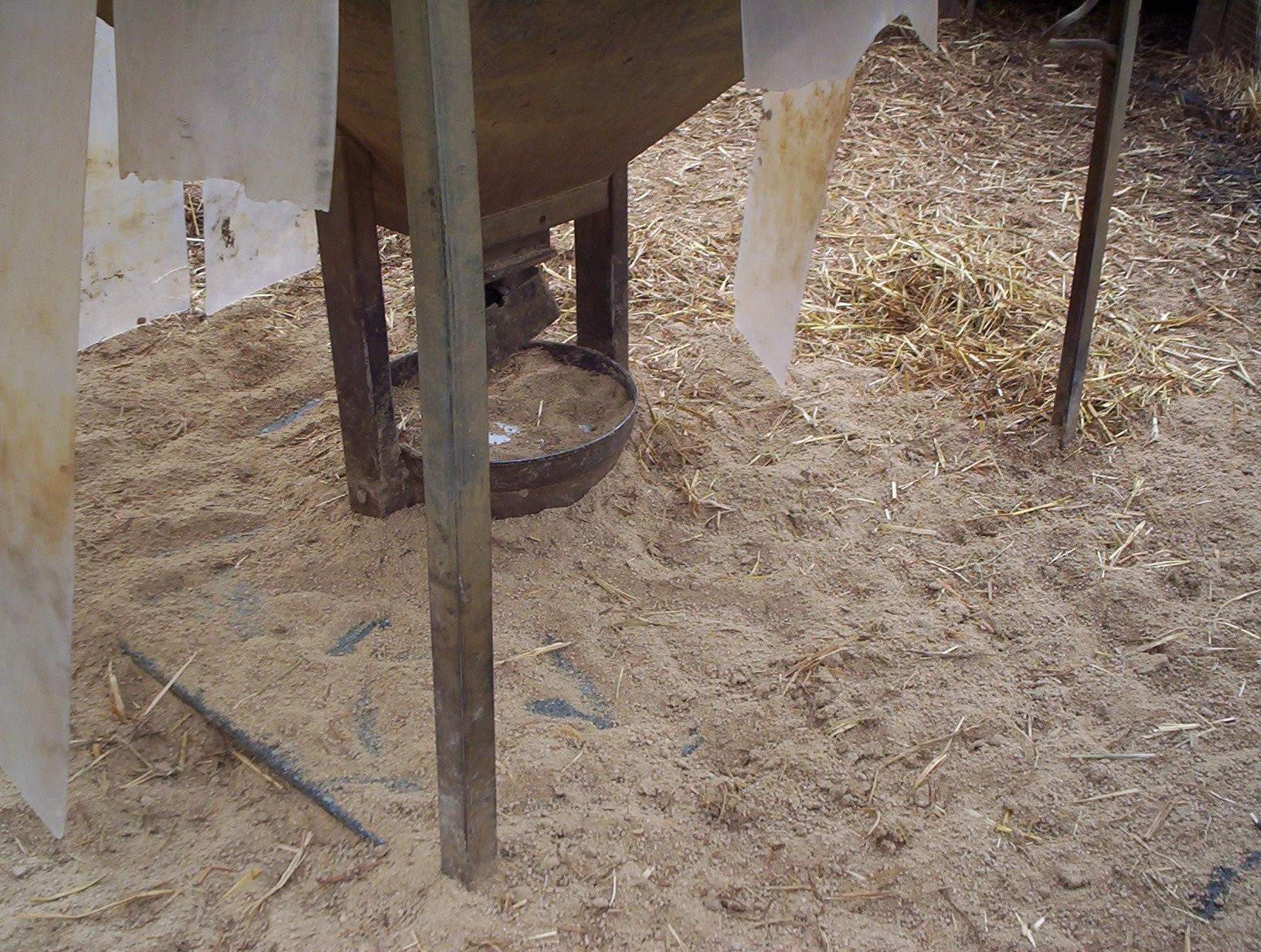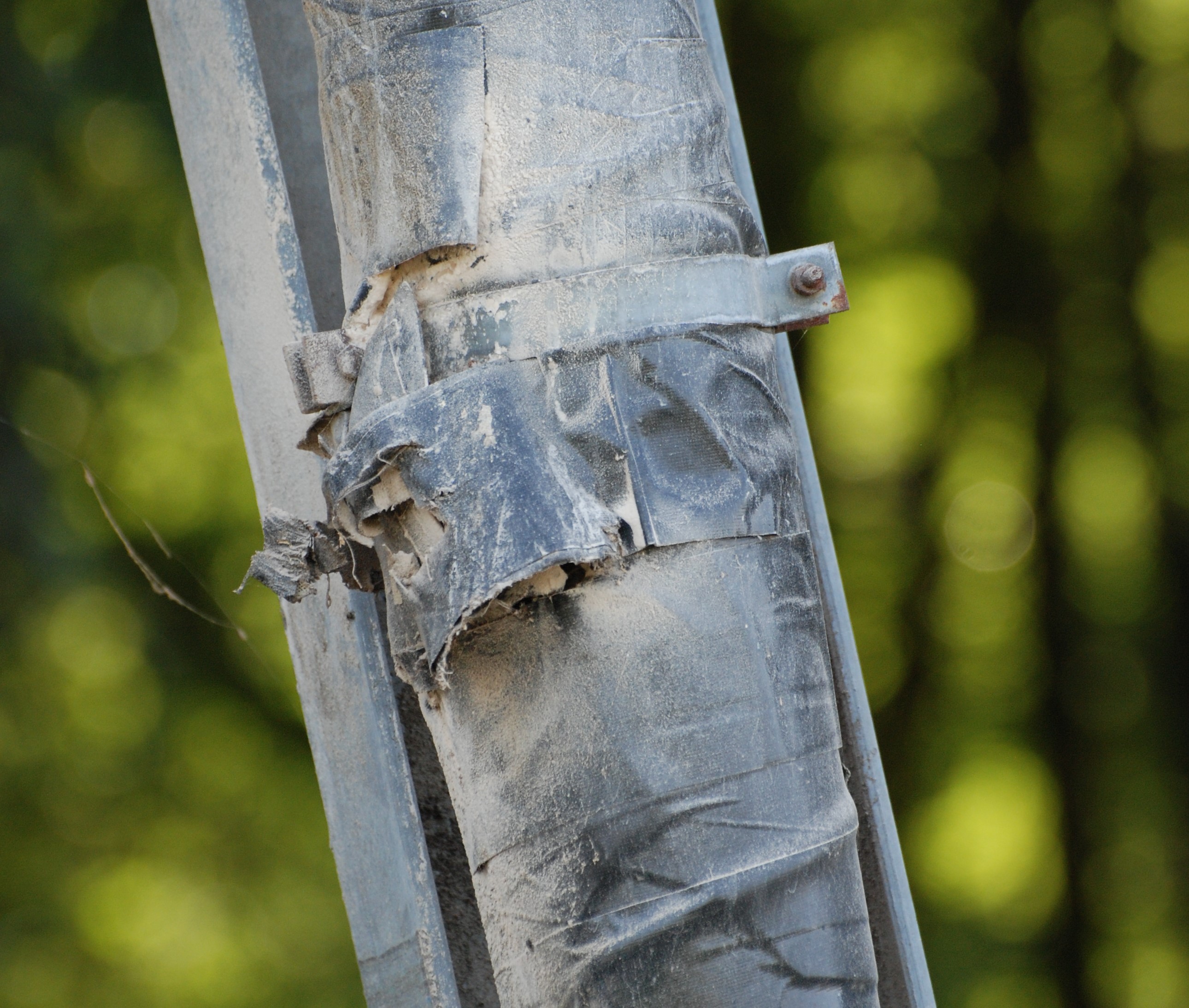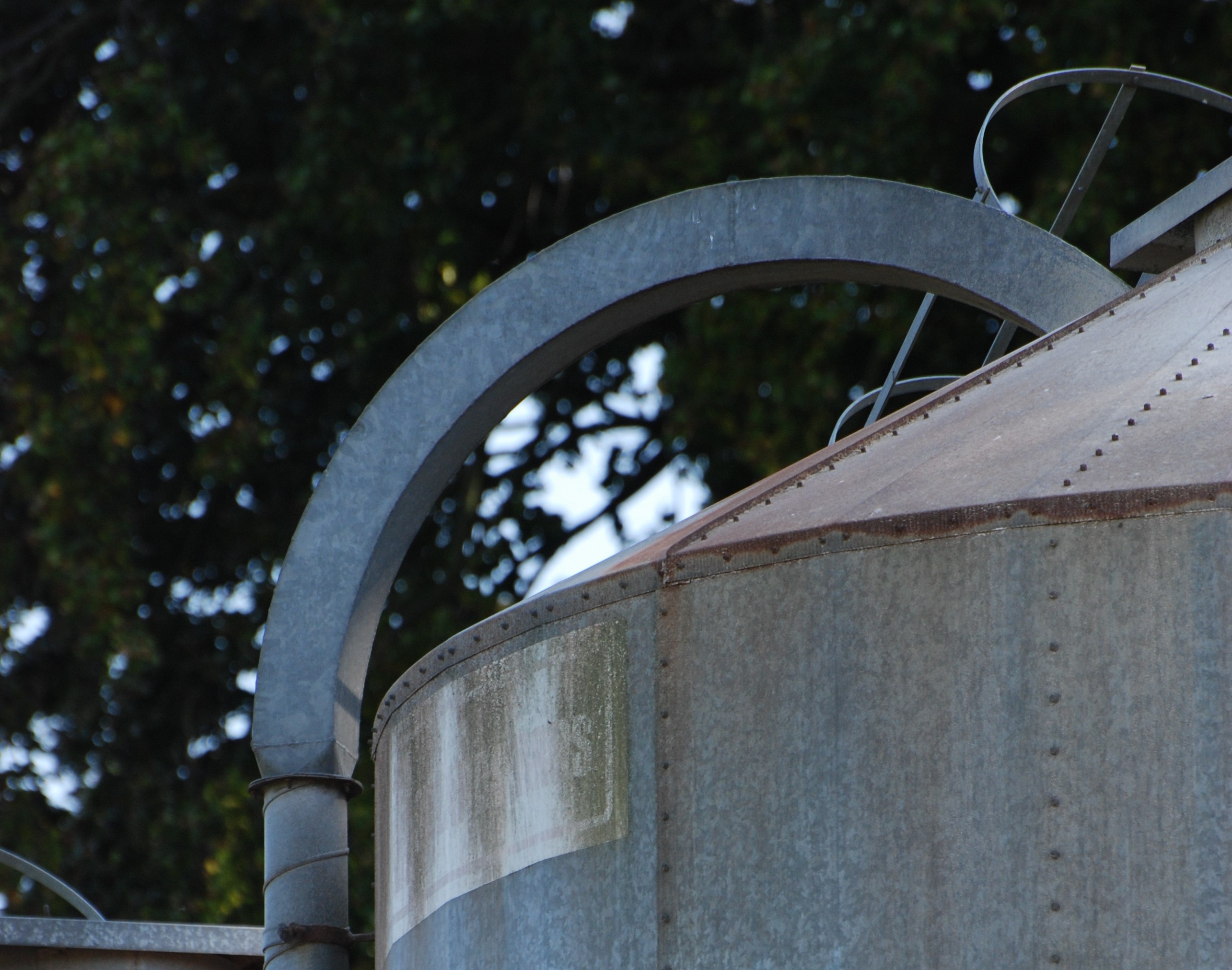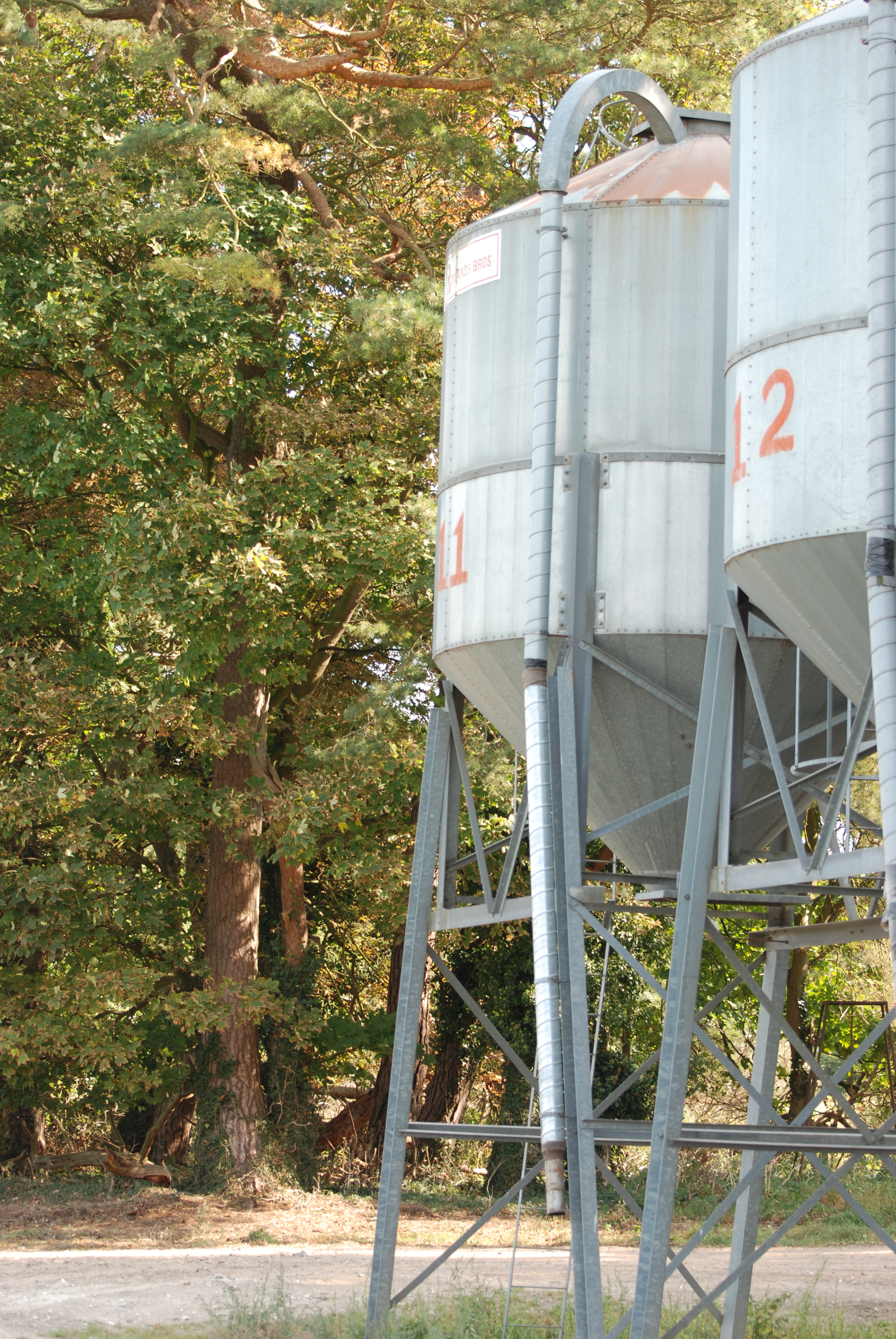- Home
- Knowledge library
- Improving feed efficiency in pigs
Improving feed efficiency in pigs
Around 10% of feed may be wasted on a typical farrow-to-finish unit. Improve or start recording feed conversion ratio (FCR) in all stages of production to allow better decision-making.
The table below shows that key inefficiencies are caused by feed waste, pigs being kept beyond Qbox specification, overstocking and poor biosecurity. These four areas alone offer maximum efficiency savings of 28.9% based on a target FCR of 2.7.
| Factor affecting feed efficiency (FCR) | Change in FCR (+ values show a decrease in efficiency) |
|---|---|
| Feed waste | +0.5 |
| Increasing sale weight to 113 kg (overproduction) | +0.2 |
| >500 pigs per air space | +0.2 |
| Continuous production | +0.25 |
| Multiple sources of pigs (disease pressure) | +0.2 |
| Mixing pigs | +0.2 |
| Cubic capacity per pig <0.7m3 | +0.1 |
| Temperature <16°C | +0.01 per °C |
| Temperature >30°C | +0.01 per °C |
Table modified from http://www.thepigsite.com/pighealth/article/307/efficient-production/ (2018)
Reducing feed waste
Consider each of the following areas to reduce wastage and improve efficiency on a regular basis.
The presence of dust, ‘fines’ or lumps of clogged feed will affect flow rates and reduce feed intake. Regular checks should be made to see if the hopper or auger mechanism is damaging/crushing the feed or affecting the pellet size, increasing wastage.
Inspect feed bins regularly for signs of damage and leakage. Check bins are correctly and easily identifiable to ensure correct deliveries. Bagged feed should be stored in a dry area and at a suitable temperature, e.g. do not store creep feed in a nursery or farrowing house as the warm temperatures will turn the feed rancid. Check feed for signs of mould and mites; if found, discard the affected feed, identify the source, e.g. clogged feed in the hopper or poor storage, and take remedial action immediately.
A broken feeder can waste up to 12 tonnes of feed a year. Wastage from feed falling between the slats or being spilt onto the floor is expensive, consider placing feeders on boards to prevent feed falling through slats. Quickly identify the cause of any spillage and rectify, e.g. the hopper design may be incorrect for the size of pig; overstocking may be causing uneven feeding; feeder flow rates may require adjustment; or the feed bins, hoppers or feed system may require repair.

Diet specification
Regularly review feed strategies with your nutritionist or feed supplier, ensuring that the diets, timing of diet changes and quantities of each diet correctly match pig flow, age of pig and growth rates. Cheapest is not always best; the value of performance must be taken into consideration, along with the feed programme.
Feed additives are an ‘essential’ component of the feed programme but the costs and margins associated with these items are very high. Many feed programmes include as many as four different types of additive, all attempting to achieve the same goal – usually enhanced gut health.
These should be reviewed critically and removed, wherever possible. These include organic acids, yeast-based immunostimulants, essential oils, herbal extracts, probiotics, prebiotics, enzymes (NSP and P) and mineral products such as zeolites. Some of these may well be cost-effective on a particular farm but, again, many are added into a feed formulation and then ignored over time and may not be needed.
Although there has been much focus on these lately, there are probably still far too many of these left in formulations under ongoing prescriptions, simply because no one has taken a decision to take them out. Obviously, this needs veterinary consultation. The functions also complement the non-prescription additives and it may be, if health status on the farm has improved, there is not so much need for ‘double cover’.
The premix component and the basic feed formulation itself usually have significant built-in safety margins, which add cost to the feed programme. These should be examined carefully with your nutritionist to look for savings. This could represent significant cost savings on many feed programmes. Many components within the premix formulations may be unnecessary and are often included for historical reasons. Most well-formulated feeds will have adequate amounts of micro-elements and the top-up from the premix could be altered.
These are actually only about 5% of the feed programme but represent about 12% of the feed costs. Despite the complexity, it is possible for a home-mixing producer to formulate and manufacture their own feeds quite successfully. More raw materials may need to be handled and stored but there are considerable cost savings to be had.
Because this is the least demanding time in the reproductive cycle, considerable savings can be made in this category of feeds. A home-mixing farmer can make cheap, simple formulations with the farm’s own resources. Quality does not have to be compromised but it does require more focus and attention on the complete programmes.
Compound feed manufacturers are expert at taking a wide array of raw materials and co-products and turning them into effective feed products and, for the large businesses with good purchasing power, this is an option to consider. There are alternative ways of developing high-performance feed programmes if producers are willing to work with their nutritionists and feed suppliers.
Feed intake
If possible, devise a way to measure the feed intake of either a whole building or individual pens. Regularly checking feed intake will help to optimise diet formulations and detect fluctuations, which will help to identify likely causes of reductions or increases in intake. Where restrict feeding, routinely check that actual drop quantities are as expected. Check dry matter content for wet feed systems.
Wet feeders
Wet feeders can utilise many types of co-products not necessarily used by the feed companies. During the last feed crisis in the pig industry, many of these producers maintained positive financial margins throughout because of their capacity to produce low cost feeds and capitalise on better FCRs.
Feed orders
Review your storage capacity. Discuss optimal load sizes with your feed supplier. It is critical to avoid running out of feed at any stage as this will adversely affect pig health and consequent performance.
Buying groups
There are still not many effective buying groups for feeds around the industry. Where 10–20 farms pool their resources, they can gain significant purchasing power by working together.
Reducing the risk of damaging feed
If 5 per cent of feed is damaged and lost to dust and waste, it can cost up to £5,000/year on a 500 sow unit; this could increase to £20,000 plus, if finishers are included, equating to an extra cost of 1p/kg deadweight. There are steps you can take to reduce the risk of damaging feed on farm.
Use this guide to walk your system and reduce the risk of waste. Working with your feed supplier and delivery driver can help.
Delivery points
Make sure your blow pipe is easily accessible for the driver and that it is a sensible length. The more pipe to blow down, the more the feed will rattle around and potentially become damaged. It is better if the driver uses only one flexible feed delivery outlet pipe to aid this.
Check bin intake pipes regularly and make sure they are well secured to the bin and free from any external damage/holes, as these will manifest over time and could eventually lead to major problems.
Worn pipes are a significant issue and it is common to see silage tape or rubber inner tube protecting holes in these inlet pipes; proper repair will reduce waste. Curved pipes are best, as the more right angles that feed is knocked against, the more it is damaged.

Make sure the fittings are smooth and not sticking out excessively. Protruding objects such as bolts will cause damage.
Bins are designed to draw from the centre. Although it may seem a good idea to keep some feed in the bin to act as cushioning for the incoming delivery, it can mean feed remains in the bin for over three months (past the use-by date for most feeds), so should be kept to a minimum; this is especially important to bear in mind with medicated feeds.

Other factors to consider
Occasionally, extra dust can be seen in bins when using in-feed medication. You must sweep bins prior to accepting a new load of unmediated feed. Medicated feed must be kept in separate, clearly labelled and identified, bulk storage or bags.
At the very least, bins should be emptied and a mould inhibitor added in the spring and after summer every year. Ideally, the bins should be brushed out, where possible, and gold standard is to wash and dry the bin prior to adding a mould inhibitor.
All feed companies have sophisticated quality control systems in place to clean and disinfect lorries, inside and out. Farms need to match this with better bin hygiene.
Aluminium bins are more prone to ‘sweating’ so these should be monitored more closely for mould growth.
Too much pressure and using the auger unnecessarily can damage feed when it is blown off the lorries into your bins, so take time to talk to your delivery driver and find out the standard times for your bins. The rule of thumb is three minutes per tonne, therefore, 18 tonnes should take about an hour.
However, this depends on the pressure, and some lorries will run on different revs to produce the same speed. Large sow rolls may need the auger on low throughout the delivery but pencil/small creep feed should not need the auger until the final part of the delivery.
The Assured British Pig standards state feed must be stored in conditions that do not allow or cause: cross-contamination, loss of feed product identity, ingress of water, foreign matter or access by pests or other animals. Under the feed hygiene regulations, producers must be registered with their local authority as a user of feed.
Maintaining water intake is critical since this drives feed intake and, therefore, affects growth rate and FCR. There must be sufficient functioning drinkers, at the correct height for the stage of pig, correctly positioned and with adequate flow rates.
One hundred rats can eat up to four tonnes of feed per year. Contamination of feed by rats, mice and birds also poses a health risk to the pigs. Maintain an active vermin control programme and bird-proof buildings, where possible. Keep lids on hoppers and feed barrows and clean up spillages promptly.
Monitor the daily min/max temperatures within buildings, as well as observing the pigs’ behaviour.
High temperatures can reduce appetite and, therefore, growth rates, while cold temperatures cause pigs to use energy to maintain body temperature rather than for growth, reducing FCR.
| Category of pig | Minimum temperature range (°C) |
|---|---|
| Sows | 15 – 20 |
| Suckling pigs in creeps | 25 – 30 |
| Weaned pigs (3–4 weeks) | 27 – 32 |
| Later weaned pigs (5 weeks +) | 22 – 27 |
| Finishing pigs (porkers) | 15 – 21 |
| Finishing pigs (baconers) | 13 – 18 |
Source: Code of Recommendations for the Welfare of Livestock: Pigs (Defra)
Check that feeders are clean and there is no caked feed. Any fouling must be cleaned out daily to reduce wastage and encourage intake.
Reducing the number of pig movements, minimising mixing, keeping variation to a minimum and enforcing actual all-in all-out policies, will all help to improve health, minimise stress and increase intake, growth rates and efficiency.
Review your current pig flow and the timing of all feed changes with this in mind. Ensure all relevant information, such as weaning date, is transferred with the pigs as they are moved through the system to enable days-to-sale to be monitored. Review all records regularly with your staff, vet and nutritionist, continually striving to improve performance.
Factors to consider when changing feed systems
| Weight of Pig (kg) | Trough / Hopper length / Pig space in mm | |
|---|---|---|
| Restrict diet | Ad lib Feed | |
| 5 | 100 | 75 |
| 10 | 130 | 33 |
| 15 | 150 | 38 |
| 35 | 200 | 50 |
| 60 | 240 | 60 |
| 90 | 280 | 70 |
| 120 | 300 | 75 |
Source:
NB: Any changes in feed, feed systems, bedding and housing can have an impact on pig behaviour and welfare. Make sure you consult the Defra codes of practice for pigs (Code of practice for the welfare of pigs), your veterinarian and farm assurance guidance, e.g. Red Tractor.
Useful links
Topics:
Sectors:
Tags:


